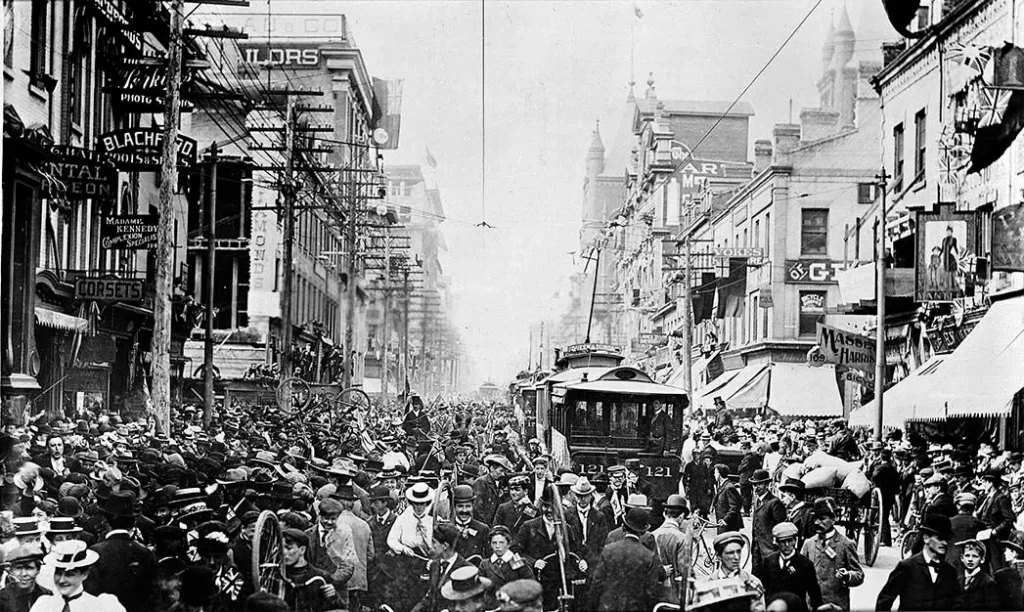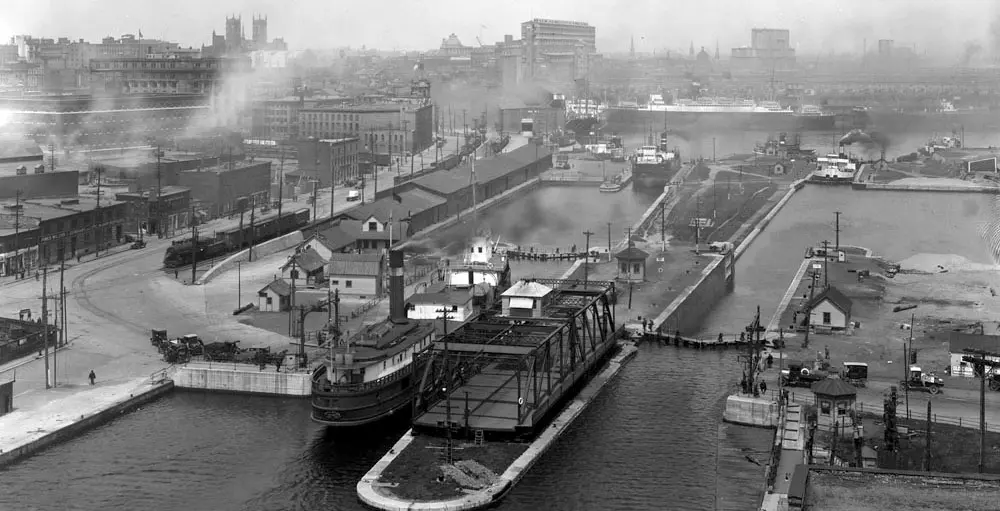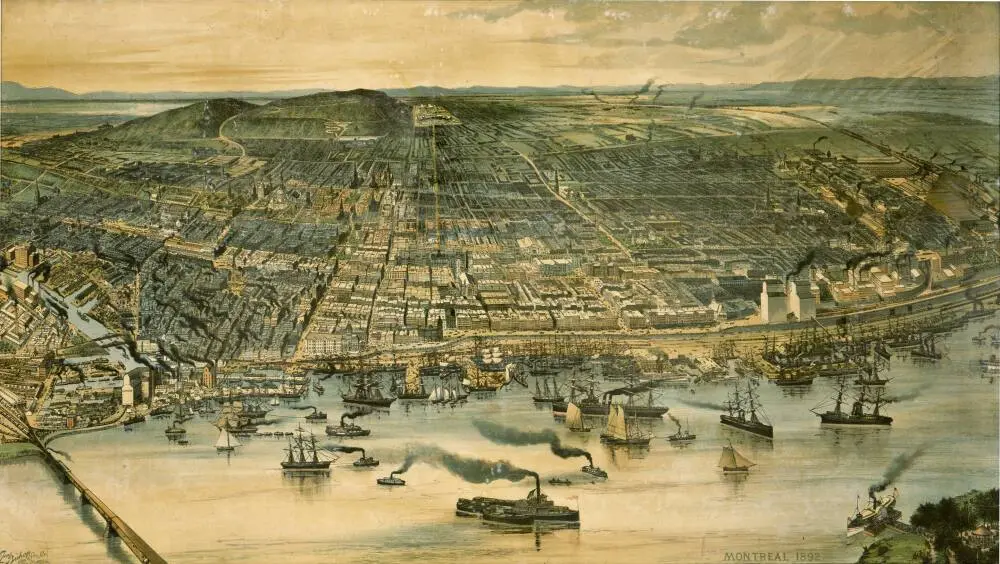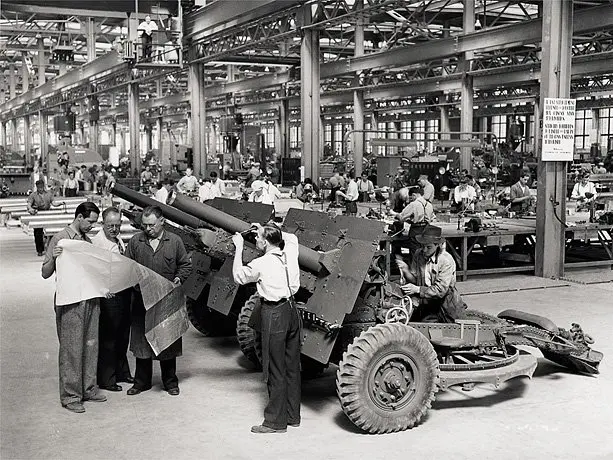
As in many other countries, industrialization in Canada was a crucial period in the development of the state and its economy. It also brought advances in many spheres of life. To understand the benefits of industrial development for Canada, the FortRoddHill experts have made a deep dive into the topic to give you a short but comprehensive summary. We also analyzed the effect of industrialization on modern Canada.
What Is Industrialization?
Simply put, industrialization is the transition from agriculture to manufacturing, and it happened practically in every country in the world in the 19th century. Canada was no exception. Factories were built, and people moved from towns and villages to big cities to work. Mass production began with the help of mechanized equipment, so people had plenty of products to buy. As a result, we could see economic growth and a significant life change for factory workers.
When Did Industrialization Start in Canada?
Industrialization and urbanization in Canada started in 1850. It was Montreal that laid the beginning of the massive change in the country. It is not surprising that it was that city, as its infrastructure and settled people who provided low-cost labour, were perfectly suitable for the transition to mass production.
History of Industrial Automation in Canada
Even though the Industrial Revolution happened in the middle of the 19th century, the first signs that big changes were coming were noticeable much earlier. To have a clear picture of what industrialization in Canada looked like and what the situation is nowadays, let’s explore it in more detail with the main periods highlighted and explained.
Pre-Industrial Stage (Before 1800)
Before the establishment of manufacturing in Canada, most goods were created by craftsmen who were responsible for the product from start to finish. Often, those people were business owners (unlike in the industrialization phase, where we see employee-employer relationships). They not only produced the goods themselves based on the needs but also were responsible for the marketing and the delivery of the finished products. It was not very cost-effective, and both the craftsperson and customers were highly influenced by the external conditions. For example, if a craftsperson got ill, they would not earn money, and buyers would not receive their goods.

Early Industrialization (1800-1850)
In the first half of the 19th century, things changed a little to give craftspeople some insurance and protection in the future. Customers, in their turn, would have a certain guarantee that they would receive what they have ordered. This shift became possible due to the establishment of craft guilds that faced the risks and challenges of the craft production model. They addressed the following things: insurance provision, supply of skilled craftspeople, apprenticeships, and training.
In the early 1800s, factories and massive manufacturing were still poor and underdeveloped in Canada, so craftsmanship flourished. Canada supplied raw materials to Great Britain and received manufactured products in return. There was barely any manufacturing facility established in the country. Only sectors such as shipbuilding, blacksmithing, sawmills, distilleries, etc., showed some signs of manufacturing models. Only in the 1840s was there a rise in manufacturing with the railroad boom and shipping. Those encouraged the development of heavy industry and business related to the sectors mentioned above.

First Industrial Revolution (1850-1890)
The first phase of industrialization started in Montreal in 1850 (that was the beginning of the revolution). This city, with its ports and hydroelectric production, was a perfect place for that. Montreal also served as a business hub for the colony. Its population was willing to work for low payments.
In the beginning, industrialization impacted sectors that had already been close to mass manufacturing, namely the development of manufacturing, steam engines, canals, and railways, which fostered the emergence of new industries, such as metallurgy. Most factories and workshops were established near infrastructure, which made transportation convenient and cost-effective. Thus, factories were built near power-generating stations, logging operations, mines, shipping, railways, terminals, and major roads. Only in the 1870s did industrialization in Canada spread from big cities to the countryside near them and to remote regions like Salaberry-de-Valleyfield.
Second Industrial Revolution (1890-1939)
Despite the significant changes in production, Canada did not show outstanding results in economic growth and was mainly the net exporter of people (Canadians migrated to the US to work). At the end of the 19th century, the economy started to seize up, and out-migration did not improve the situation. Fortunately, in the 1890s, new advances in technology happened, and it gave a start to the new wave of industrialization. The most essential among those was developing the Bessemer system for manufacturing steel. It pushed for infrastructure building and further growth of coking coal production and iron mining. New companies were established. The second phase gave Canada a start in industrial capitalism.
Wartime and Post-War Industrialization (1939-1970)
Even though the war period was tragic, it gave an impressive boost to the growth of industrialization in Canada. The country became one of the leading aircraft parts, cars, and truck manufacturers. Shipbuilding, military equipment, and foodstuff production also soared during wartime. New technologies from other countries were implemented in Canadian industries, so the country appeared to be one of the major industrial powers at the end of the Second World War.
After the end of the war and until the 1970s, Canadian industry boomed and showed impressive growth in many sectors. US investments fueled this growth, and the manufacturing was adapted to the American consumption-based style. The postwar period was one of the longest periods of Canadian economic prosperity.

Modern Industrial Transition (1970-Present)
In the 1970s, industrial automation in Canada and the country’s economy experienced a recession. It was partly caused by the necessity of the government to promote Canada-owned manufacturing and business (triggered by the anti-American movement and also by the world economic problems, like an embargo on petroleum exporting).
In the 2000s, Canada experienced a sharp decline in manufacturing. It returned to an export-oriented natural resource extraction economy. After the 2008 financial crisis, this tendency intensified, and many factories closed. As a result, the number of industrial jobs decreased. Many technology and manufacturing firms also closed their doors.
Effects of Industrialization On Canada
The Industrial Revolution transformed Canada significantly, and this advance had impacts on all areas of life and the economy. The FortRoddHill analysts explain the three main effects below.
Change of Working Conditions
One of the main effects of industrialization on Canada was the way goods were produced, as well as the way business was built. Moreover, the working class was established due to the shift to capitalism. Here is what production looked like pre and after the industrial revolution.
| Work Structure | Pre Industrial Revolution | After Industrial Revolution |
| Ownership of Business | Craftsperson | Employer |
| Work Division | Craftsperson was responsible for all the aspects | Workers have their own tasks as parts of the entire process |
| Work Location | Home or workshops | Factories in big cities or urban areas |
| Market | Local | Country-level or international |
| Types of Goods | Custom | Mass production |
The Growth of Cities
Urbanization started when people from rural areas moved to big cities to work in factories. That triggered the rapid growth and development of the cities in the late 1800s. Cities such as Ottawa, Toronto, and Monreal became industrial hubs with rapid population growth. This led to such challenges as increased pollution and a shortage of housing.
The Effect on Indigenous and Immigrant Communities
For indigenous communities and immigrants, the Industrial Revolution was packed with challenges. Thus, the way indigenous communities lived was disrupted by railroads and factories. The building of the Canadian Railroad also impacted hunting grounds and resources. Many indigenous people lost their lands.
As for the immigrants, industrialization was a mix of hope and hardships. They were employed by factory owners or were involved in the railroad building. However, they worked in dangerous conditions for extremely low wages and lived in poor conditions. Still, they managed to build communities, which later contributed to Canadian diversity and economy.
Summary
We have explored the history of industrial automation in Canada from the early 19th century up until now. Canada experiences both an industrial boom and a recession. The days of industrial prominence have passed, leaving a huge footprint on the history of Canada. Currently, the industrial sector is no longer a significant part of the economy, and other sectors bring more income to the country’s budget.
FAQ
What Caused Industrialization in Canada?
The emergence of capitalism was one of the main causes of industrialization in Canada, along with the evolution of the way business worked.
How Did Industrialization Change Canada?
Canada became one of the most powerful industrial countries after the Second World War and until the 1970s. It brought new technologies and advances to the country.
